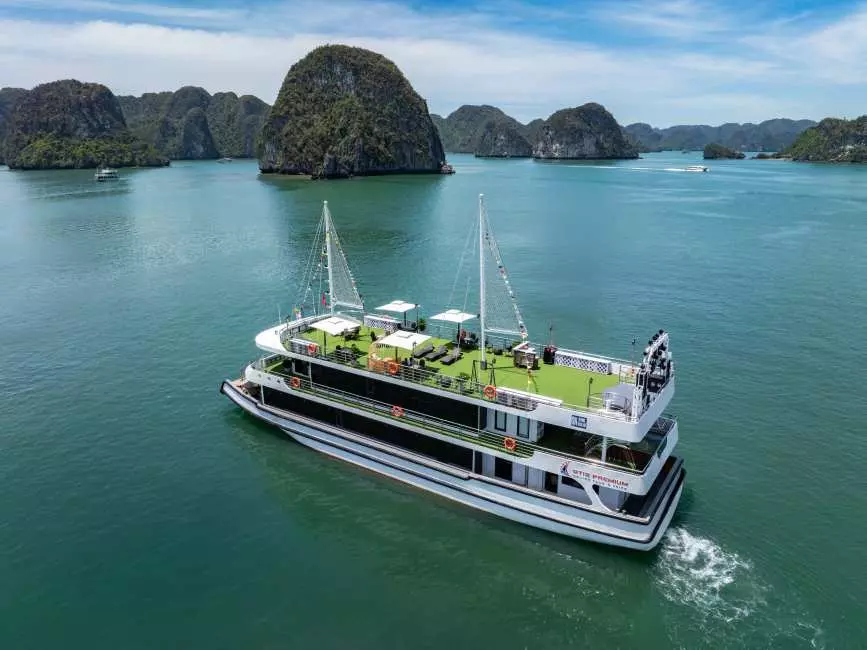A VOLCANO TOWERS above Lake Chuzenji in Nikko, the reflection of its craggy slope shimmering on the water. Mount Nantai has long called travelers to this part of central Japan. Some 1,200 years ago, the wandering monk Shodo Shonin fell under its spell. In its honor, he founded a temple, Rinno-ji, and a shrine, Futarasan-jinja, nearby. Legend holds that it took him three attempts to reach the top, and when he finally did, he built another small shrine at the 2,485-meter summit.

Lake Chuzenji, as seen from a suite at the Ritz-Carlton, Nikko
As I looked out from Chuzen-ji, a temple on the lake’s eastern shore, on a crisp day last February, Nantai’s allure seemed as strong as ever: its wide base circumscribed the horizon, and its snow-dusted peak poked out over the pine forests. As Jihou Hatakeyama, a monk, told me, “Spirits live inside the mountain.”

For centuries after Shodo, religious seekers flocked to Nikko, a two-hour train ride north of present-day Tokyo. Prospective monks sought enlightenment through ascetic practice, feasting on protein-rich yuba, or tofu skin, which remains one of the region’s delicacies. Nikko developed a reputation as a center of spirituality; Tokugawa Ieyasu, the founder of the shogunate that united Japan’s warring clans and closed the country to the outside world in the 17th century, chose it as the location for his tomb, now a popular pilgrimage site.
After the Tokugawa shogunate fell in the mid-19th century, Japan opened to foreigners, who discovered Nikko’s secular charms: picturesque landscapes, fresh sake, and hot springs that leave your skin feeling like silk. Diplomats and expats escaped Tokyo’s hot summers at Lake Chuzenji, introducing trout to its streams and building elaborate residences along its shores, while enterprising locals erected Western-style hotels to cater to the new arrivals.

Yet in the decade leading up to the pandemic, as international travelers flocked to Japan in ever greater numbers, Nikko was largely overlooked. Many Japanese travelers also stopped seeing it as a vacation destination, instead associating the area with school trips to the tombs of Ieyasu and his relatives. Hoping to revive visitor interest in the region, Tobu Railway, the train company that operates the line connecting Nikko with Tokyo, partnered with Marriott International in 2016 to reconstruct the Lakeside Hotel, a 19th-century property that had fallen into disrepair.
The result, The Ritz-Carlton, Nikko (doubles from US$530), opened in July 2020 on the eastern shore of Lake Chuzenji. It fuses the elegance of a traditional Japanese ryokan with the luster of an international luxury brand. Wood carvings and latticework made by local artists and artisans warm the high-ceilinged, glass-walled modern buildings. Guests receive yukata, or casual kimonos, custom-made from soft linen, and, in winter, haori, or outer coats, with cozy fleece linings.
My wife, Uliana, and I spent most of our time in the opulent onsen, which features an all-granite indoor bath and a rotenburo, or open-air bath, beside a traditional garden. From there we retreated to sleep in our spacious suite, awakening to a view of the cotton-candy sunrise over the lake and, naturally, Nantai, which is considered an active volcano to this day (though its most recent eruption likely took place 7,000 years ago).

Like the design, the dining draws deftly on both Japanese and Western traditions. Partway through the teppanyaki course at the main restaurant, chef Takehiro Eda assembled an unforgettable crêpe filled with Wagyu beef bourguignon. At the more casual Lakehouse restaurant, we ate a pizza topped with local maitake mushrooms and black truffle. In the lobby bar, I alternated between smooth Japanese single malts and their smoky Scottish counterparts.
But the real reasons to visit Nikko lie beyond the walls of The Ritz-Carlton. “It’s an experiential stay,” Masanori Hosoya, the property’s general manager, told me. “It’s not about being in the room.” Just around the corner, the breathtaking Kegon Falls cascades more than 90 meters into a ravine. Cherry blossoms and azaleas blanket the hills in spring. The fall foliage might just be Japan’s finest.

During the warmer months, hikers take to the trails and fishermen flock to the rivers near Lake Chuzenji. In the winter, the shops and cafés in town mostly hibernate, while the snow turns the mountains into a playground. Hosoya and his team suggested we head north into the forest, so we strapped on snowshoes and joined a pair of experienced guides. Weaving between pine, cypress, and birch, we could see fresh tracks left by hares and weasels. In a clearing, we dug seats out of the snow, laid out a picnic of pork katsu sandwiches, and gazed across the valley.
From that vantage point, it was easy to understand why Ieyasu picked Nikko as his final resting place. Our last stop in the region was his tomb, which sits at the heart of a sprawling group of Shinto shrines and Buddhist temples designated as a UNESCO World Heritage site. The complex is extensive enough to spend a whole day exploring, and serves as a prime example of how Japan’s two main religions coexist.
The austere wooden gates of Shodo’s Shinto shrine, Futarasan-jinja, stand in stark contrast to Tokugawa’s shrine, Tosho-gu, a flamboyant, colorful construction covered with carvings, including an adorable sleeping cat, a psychedelic elephant, and the original trio of see-no-evil, hear-no-evil, speak-no-evil monkeys.

On our way out, we stopped in the main hall of Rinno-ji, the Buddhist temple founded by Shodo. Three eight-meter-tall golden statues fill the hall, each representing a holy mountain. I bowed in front of the thousand-armed Buddha for Nantai, and promised the spirits I would be back again.
Noah Sneider is the Tokyo bureau chief for the Economist.
By Noah Sneider
Photographed by Tetsuya Miura

